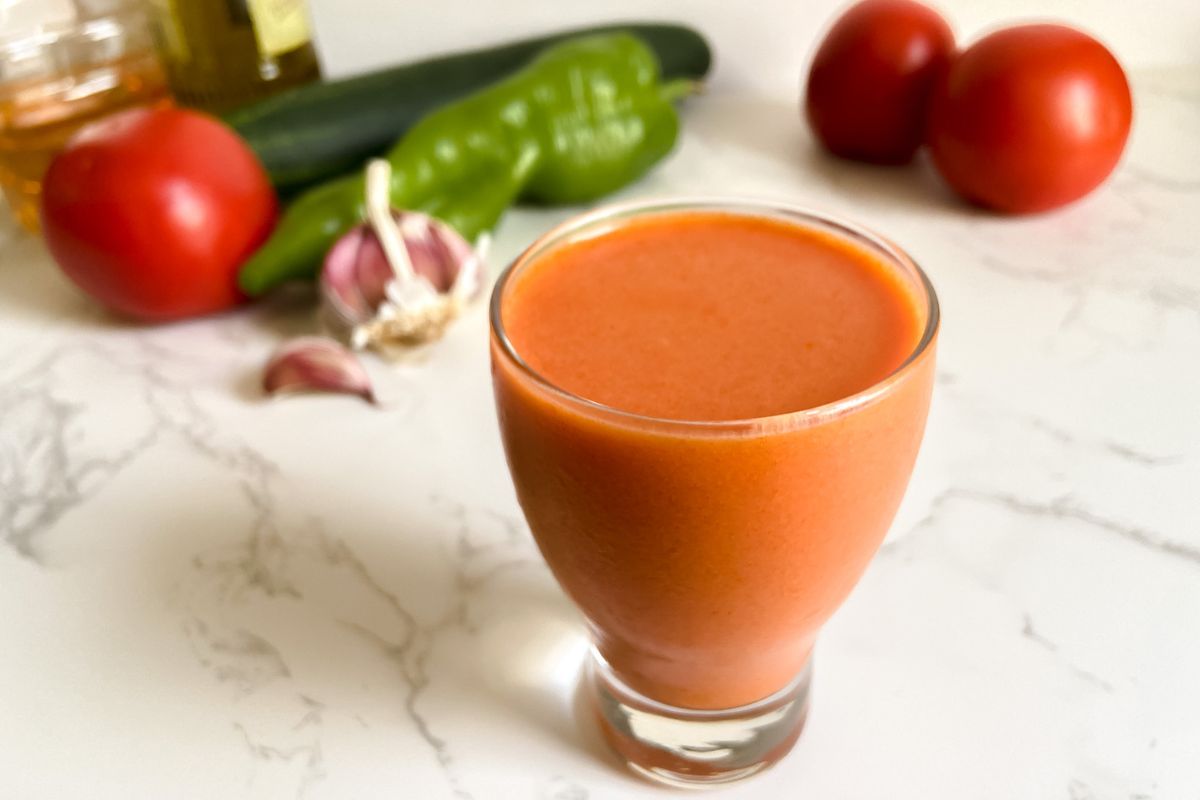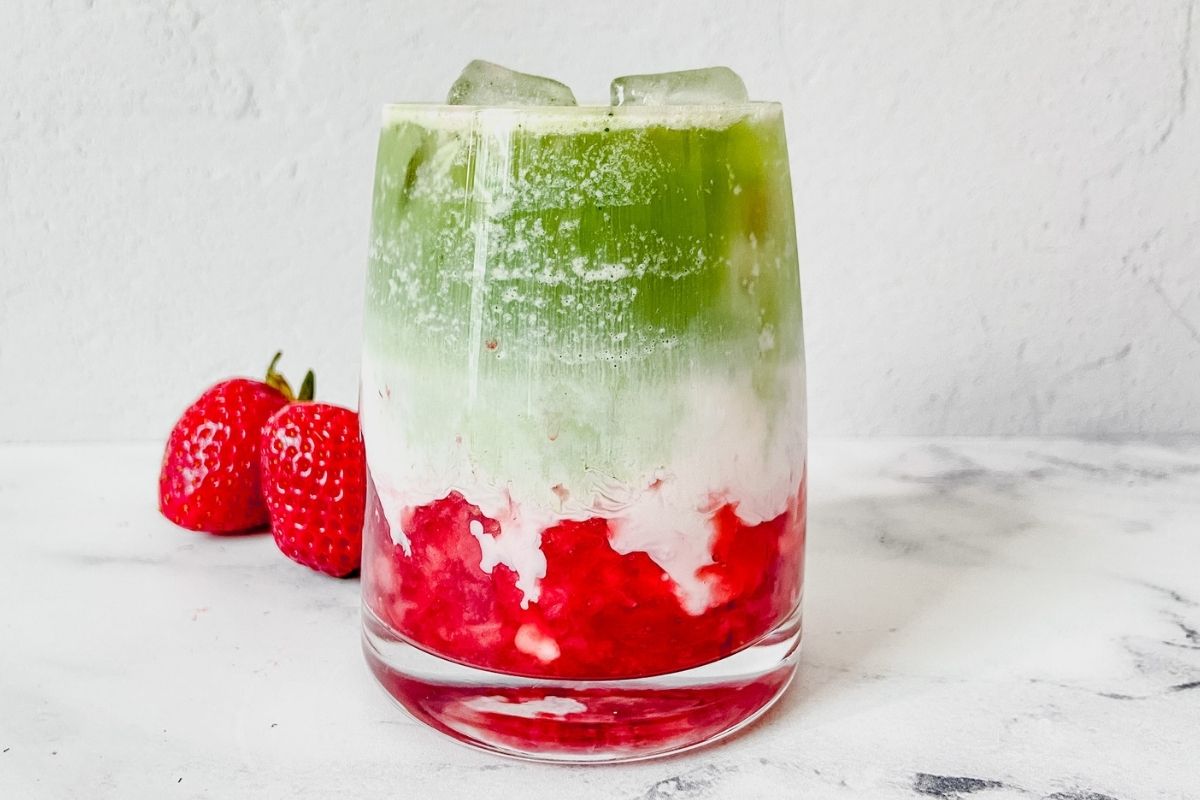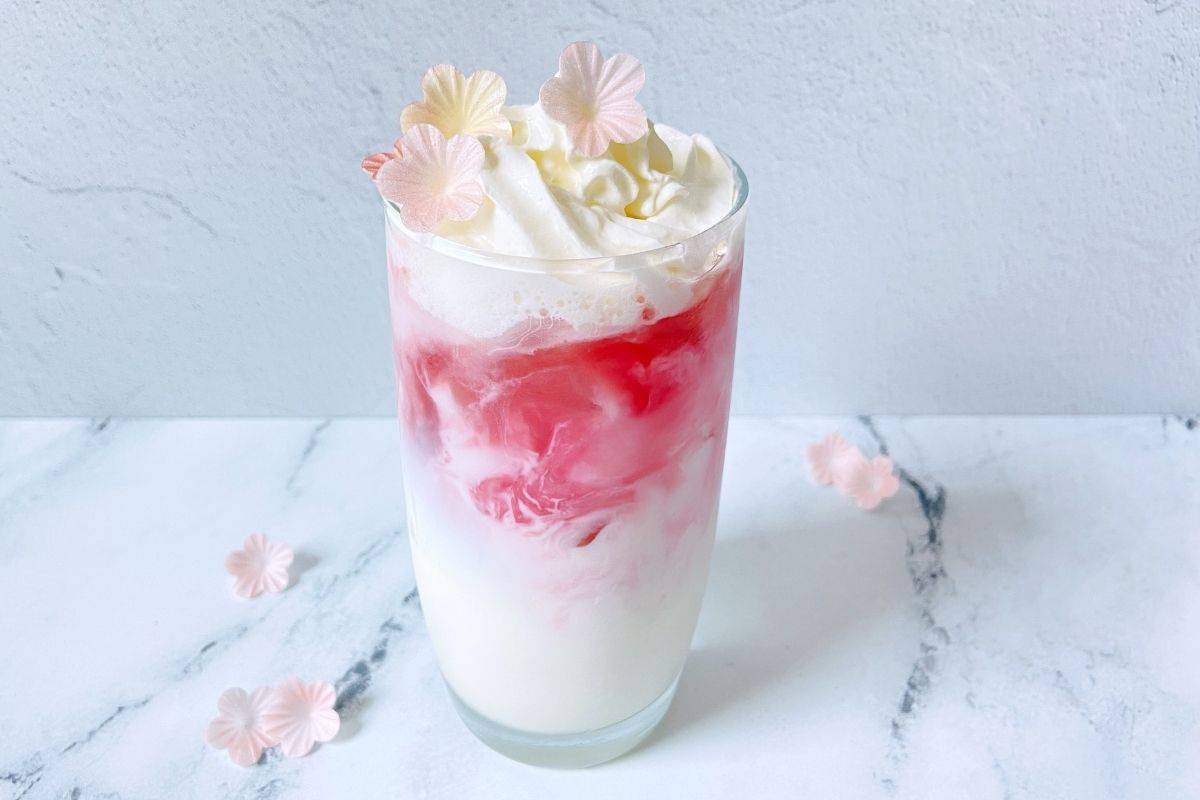Spanish drinks non-alcoholic
The ultimate guide on what to drink in Spain if you don’t “drink”.
Learn how to ask for non-alcoholic drinks in Spanish from a native Spanish speaker.

Have you ever wondered how to say tea in Spanish (or the name of another non-alcoholic beverage)?
In this post you’ll learn the words and phrases you need to order or recognize alcohol-free beverages in Spain or in a Spanish-speaking country.
Some words may vary depending on where you’re at, but don’t worry: with this list you won’t go thirsty in Spain!
Alcohol-free drinks in Spain
With Spain’s fame as wine country, non-drinkers may think they will have trouble finding something fun to drink during their visit… but fear not!
There are actually plenty of delicious beverages without alcohol available throughout Spain.
So, let’s see all the mouth-watering options you have in Spain if you are a teetotaler, or if you are just looking healthy beverages for the whole family.
I know very little about alcohol, so I haven’t touched on the topic on this list. However, let me know if you want me to add some info about it in the future.
[Note about pronunciation: I’ve transcribed the words as they are read in English; the stressed syllable is bold. If you’d prefer to hear the words, this site is very helpful. They also transcribe with International Phonetic Alphabet (IPA), in case that’s easier for you].
How to ask for water in Spain

Let’s begin with the most essential beverage.
In Spain, the most common form of water is without gas, but it’s also quite easy to find carbonated water.
Here are some words you may want to know about water in Spanish:
- Agua sin gas [ah-gwah seen gahs] – Water without any bubbles or carbonation.
- Agua con gas [ah-gwah kohn gahs]- carbonated water
- Agua mineral [ah-gwah mee-neh-rahl] – Natural spring water. Most of these are still water: fizzy water in Spain is usually an exception and it’s always labeled as such (“con gas”). Only in some restaurants in Cataluña and other places near France, it’s sometimes easier to find sparkling water than flat water.
- Agua con sabor o aroma [ah-gwah kohn sah-bohr or ah-gwah kohn ah-roh-mah]- Flavored and/or scented waters such as water with juice or flavorings. They weren’t so popular until recent years, but now you can find them in many supermarkets.
- Agua de grifo [ah-gwah deh gree-foh] – tap water.
Juice in Spanish

The Spanish word for juice is “zumo” [thoo-moh].
In some regions it’s pronounced [soo-moh] and in many Latinamerican countries it’s called “jugo” [hoo-goh].
The most common juice types in Spain are orange juice, apple juice, peach and grape juice, pineapple juice, and tomato juice.
Processed juices are usually made from concentrated juice, but they don’t contain added sugar.
If they have something other than real juice, they are called “néctar” instead.
In many stores you can also find some mixed juices with names like “tropical” o “mediterráneo”(mediterranean).
If the name ”zumo” is on the package, they won’t contain any added sugar.
Here you get an overview of all common words related to juice in Spain:
- Zumo de naranja [thoo-moh deh nah-rahng-hah]- orange juice
- Zumo recién exprimido [thoo-moh rreh-thyehn ehks-pree-mee-doh]- fresh-pressed juice; these taste delicious and are by far my favorites! I love how easily you can find fresh pressed orange juice in Spain.
- Zumo de manzana [thoo-moh deh mahn-thah-nah] – apple juice
- Zumo de melocotón y uva [thoo-moh deh meh-loh-koh-tohn ee oo-vah] – peach and grape juice; this is a very common combination in Spain that I haven’t seen in other countries.
- Zumo de tomate [thoo-moh deh toh-mah-teh]- tomato juice
- Zumo de piña [thoo-moh deh pee-nyah]- pineapple juice
- Zumo de pomelo [thoo-moh deh poh-meh-loh]- grapefruit juice
- Zumo con pulpa [thoo-moh kohn pool-pah] – juice that has some fruit pulp in it
- Licuado [lee-kwah-doh] – blended juice from fresh fruit or vegetables
- Mosto [mohs-toh]- “mosto” is the Spanish name for grape juice. But be aware: in some parts of southern Spain like in Jerez, mosto is also the name for a young wine, which has about 12% alcohol.
- Néctar de… (name of the ;fruit) [nehk-tuh]- this won’t be 100% fruit juice but a mix of juice, water, and added sugar.
- Sin azúcar añadido [seen ah-tooh-kahr ah-nyah-dee-doh] – no added sugar
Tea in Spain

Tea is not a traditional part of the culture in Spain, so unless we’re talking about a specialty tea shop ‘tetería’ or a high-end café, you’ll probably get teabags when asking for tea.
Tea is called “té” [teh] in Spanish, and these are the most common types to find in Spain:
- Té negro [teh neh-groh]- black tea
- Té verde [teh behr-deh]- green tea
- Té blanco [teh blahn-koh]- white tea
- Té moruno [teh moh-roo-noh] – this is a popular way of preparing tea from Morocco. Fresh mint tea leaves are brewed with green tea.
Herbal or fruit teas in Spanish

In Spain, only the beverage that comes from the Camellia Sinensis tea plant is called tea (té). All other varieties are “infusión” in singular or “infusiones” in the plural.
Traditionally, the most common infusions among Spaniards include:
- Manzanilla [mahn-thah-nee-yah]-camomille tea. Please note that there is also a wine in southern Spain called Manzanilla.
- Menta poleo [mehn-tah poh-leh-oh]- pennyroyal mint tea. It tastes similar to peppermint tea, but it has a stronger minty flavor. Pregnant women should avoid drinking this herbal tea.
- Hierbabuena [ yehr-bah-bweh-nah]- spearmint mentha spicata. Té de hierbabuena or infusión de hierbabuena is made with the fresh leaves of this plant. If it also contains green tea, it’s called té moruno.
- Rooibos – this herbal tisane can be called “tea” instead of infusion. But rooibos isn’t related to black or green tea, so it doesn’t have any caffeine. Most blends are a mix of rooibos with dried herbs for more flavor, fruit to add sweetness or other aromatics such as lavender for scent.
How to order coffee in Spain
I don’t drink coffee, so unfortunately, I can not write so much about it. However, the most common words for coffee in Spanish are:
- Café solo [kah-feh soh-loh]- black coffee
- Café con leche [kah-feh kohn leh-cheh] – coffee with milk, white coffee or coffee latte
- Café cortado [kah-feh kohr tah-doh]- espresso with a dash of milk
- Café manchado [kah-feh mahn-chah-doh]- hot milk with some drops of coffee
- Café helado [kah-feh eh-lah-doh]- iced coffee
Coffee cream isn’t so popular in Spain, so when ordering anything that involves dairy you’ll typically get regular pasteurized cows’ milk. If you are looking for a coffe cream alternative on a supermarket, leche evaporada (unsweetened condensed milk) could do it.
If you are a coffee lover, you may like this cheat sheet from madridfoodtour.com:

What’s the name for different sweeteners in Spanish?
In Spain, it’s very common to get some sugar sachets served at no cost with your hot beverage. Almost all establishments also have saccharine.
If you look for alternatives like stevia, erythritol, or xylitol, you will find them quite easily in bigger supermarkets.
Let’s see some names for sweeteners in Spanish:
- Azúcar [ah-thooh-kahr] – sugar
- Azúcar blanco [ah-thooh-kahr blahn-koh]- table sugar
- Azúcar moreno [ah-thooh-kahr moh-reh-noh]- brown sugar
- Azúcar de caña [ah-thooh-kahr deh kah-nyah] – cane sugar
- Miel [myehl]- honey
How to choose your milk of choice in Spain
When doing groceries in Spain, milk usually comes in 1-liter (33,8 oz.) tetra paks.
The most common type is pasteurized cow’s milk and you can find it with 3 fat grades: full-fat, semi-fat, or fat-free.
Lactose-free alternatives are also widely available.
Since a couple of years, European laws don’t let call vegetal milk alternatives “milk” but rather only allow them to be called “vegetable drink” (bebida vegetal – beh-bee-dah beh-heh-tahl].
That said, you can of course order for example “soymilk” or ”almond milk”: everyone will understand what you want (but you won’t find these alternatives labeled with the word “milk” the shelves of supermarkets).
These are some words related to milk that might come in handy when grocery shopping or order:
- Leche [leh-cheh] – milk
- Con leche [kohn leh-cheh]- with milk
- Leche sin lactosa [leh-cheh seen lahk-toh-sah]- lactose-free milk
- Leche entera / con toda su grasa [leh-cheh ehn-teh-rah / kohn toh-dah soo grah-sah]- full-fat milk
- Leche semi desnatada [leh-cheh seh-mee dehs-nah-tah-dah] – semi-skimmed milk
- Leche desnatada [leh-cheh dehs-nah-tah-dah] – skimmed milk
- Bebida de soja [beh-bee-dah deh soh-hah]- soymilk
- Bebida de avena [beh-bee-dah deh ah-beh-nah]– oat milk
- Bebida de almendras [beh-bee-dah deh ahl-mehn-drah]– almond milk
- Bebida de arroz [beh-bee-dah deh ah-rrohth]– rice milk
- Leche en polvo [leh-cheh ehn pohl-boh]– powdered milk
- Leche condensada [leh-cheh kohn-dehn-sah-dah]– sweet condensed milk
- Leche evaporada [leh-cheh eh-bah-poh-rah-dah] – unsweetened condensed milk
- Espuma de leche [ehs-poo-mah deh leh-cheh]- milk froth
How are Spanish shakes? How to ask for a milkshake in Spain?
On many Spanish stores (and also menus) you will see something called “batido”, which translates as shake.
But be aware: the basic Spanish batidos (milkshakes) are different than American ones; they aren’t thick at all!
Spanish milkshakes have the same texture as regular milk: they are just colored and with added sugar.
The most popular milkshakes in Spain are:
- Batido de chocolate [bah-tee-doh deh choh-koh-lah-teh] – cocoa flavored milk drink
- Batido de vainilla [bah-tee-doh deh bay-nee-yah] – milk drink with vanilla flavor
- Batido de fresa [bah-tee-doh deh freh-sah]- pink milk drink with strawberry taste
However, if you fancy a “real” shake with creamy texture, you’ll be able to find them in ice cream parlors, cafés or of course, any of the big international fast food chains we all know.
Sometimes these American style milkshakes are called “batido helado” [bah-tee-doh eh-lah-doh] in Spanish.
Other non-alcoholic Spanish drinks: interesting beverages to try when in Spain

These are some other beverages that you’ll often find in Spanish cafes, restaurants, or at the groceries:
- Horchata [ohr-chah-tah] – a sweet milky cold drink made of chufa, an edible tuber. You can buy horchata bottled in any store, but nothing compares with traditionally handmade horchata. This refreshing beverage is typical in the region of Valencia (on the Mediterranean side of Spain)
- Limonada [lee-moh-nah-dah]- it means lemonade is Spanish, but it’s not your traditional lemon soda-water mixture. In Spain, limonada is sweetened lemon juice without bubbles.
- Granizado [grah-nee-thah-doh in most peninsular Spain; grah-nee-sah-doh in Latinamerica or some parts of Spain] – granizado could probably translate as “slushy”: a refreshment in which some type of sweetened juice is served with crushed ice.
- Chocolate a la taza [choh-koh-lah-teh ah lah tah-thah] – Spanish hot cocoa is very thick and it’s often served along with churros.
- Yogurt para beber [yo-guhrt pah-rah beh-behr] also known as “yogur batido”, this is a drinkable yogurt with some sugar and fruit flavor.
- Leche con zumo [leh-cheh kohn thoo-moh]- milk with juice. Does the idea of this combo surprise you? The mix of some sorts of fruit juice with milk can be found on the juice aisle of almost every supermarket in Spain, but I haven’t seen it in other countries. It’s usually marketed as a drink for kids.
While most of them state they are added sugar-free, they often contain some kind of sweetener like aspartam. - Gazpacho [gahth-pah-choh] – this is a cold soup, but I’ve added it to this list because it’s so good on hot summer days! Gazpacho is typically made of the tomato and combined with cucumbers, peppers, some wine vinegar, olive oil and salt.
Gazpacho is a very beloved ”drink” in Spain, specially in summer and you’ll be able to find it in many restaurants as well as in the refrigerated aisle of any supermarket:

RELATED: How to make gazpacho like in Spain (and how to choose the best gazpacho on a grocery store)
How to ask for cold/hot drinks in Spanish

Would you like to express in Spanish how cold you want your drinks?
Here are some phrases that will help you order your beverages at the desired temperature:
- Frío [fryoh] – cold
- Con hielo [kohn yeh-loh]- with ice cubes
- Sin hielo [seen yeh-loh] – without ice cubes
- Del tiempo (or) a temperatura ambiente [dehl thyehm-poh (or) ah tehm-leh-rah-too-rah ahm-byehn-teh] – room temperature
- No frío [noh fryoh] – not cold
- Bebida caliente [beh-bee-dah kah-lyehn-teh] hot drink
- Templado [tehm-plah-doh] – slightly warm
Note that some adjectives change their ending (mostly to -o or -a) depending on the genre of the word.
For example, “frío” means cold, but cold water is not “agua frío” but “agua fría”, ending with an -a, because water (agua) in Spanish is a “feminine” word.
But since we aren’t aiming to learn how to speak perfectly here, but rather to be able to understand the words on a menu or on the groceries, I wouldn’t worry much about these details. Don’t let perfect be the enemy of the good!
Sizes of drinks in Spain
If you compare the drinks in Spain with the beverages in countries like America or Germany, most drinks in Spain are relatively “small”.
Spain uses the metric system, so everything liquid is in milliliters or liters. For example:
- many small drinks have 200 ml (almost a cup); another standard volume for drinks is 330 ml.
- the big containers, like water bottles, contain 1,5-2 liters (around 6-8 cups)
- there is also a middle measure between 500 and 750 milliliters (approximately 2-3 cups)
Here is a full liquid conversion chart for your convenience:

Other words that may be useful to know are:
- Pequeño [peh-keh-nyoh]- small
- Grande [grahn-deh] – big
- De tamaño mediano / de tamaño medio [deh tah-mah-nyoh meh-dyah-noh / deh tah-mah-nyoh – meh-dyoh] nor specially big nor small but something in between
Other useful words related to drinks in Spanish
- Tetera [teh-teh-rah] – teapot
- Taza [tah-thah; tah-sah if you are in some regions of Andalucia, the Canary Isles or in Southamerica] – cup
- Vaso [bah-soh] – glass
- Pajita [pah-hee-tah]- straw
- Sin alcohol [seen ahl-koh-ohl] – alcohol-free
- Descafeinado [dehs-kah-fey-nah-doh]- decaffeinated
- Sin cafeína [seen kah-fe-ee-nah] caffeine-free
- Nata montada [nah-tah mohn-tah-dah] – whipped cream
- Una “sin” [oo-nah seen]: this is the abbreviated way to ask for an alcohol-free beer. If you want more than one, just change “una” (which means one), for the number you desire. The full name for alcohol-free beer is actually “cerveza sin alcohol” [thehr-beh-thah seen ahl-koh-ohl].
And as a final tip to order drinks easy and quick: although you can always say it longer, you don’t need the whole phrase “could I have xxx?” to ask for a drink in Spain.
Instead, it’s enough to say: “x (so many you want) xxx (what you’d like to drink), por favor (please)”.
For example: you can say “una taza de té verde, por favor” (a green tea, please); this is how most of Spaniards order drinks.
I hope this list of alcohol-free beverages in Spanish helped you understand the various options you have for drinking in Spain.
If there’s a word or phrase here that confused you or you have any other requests, please let me know!







